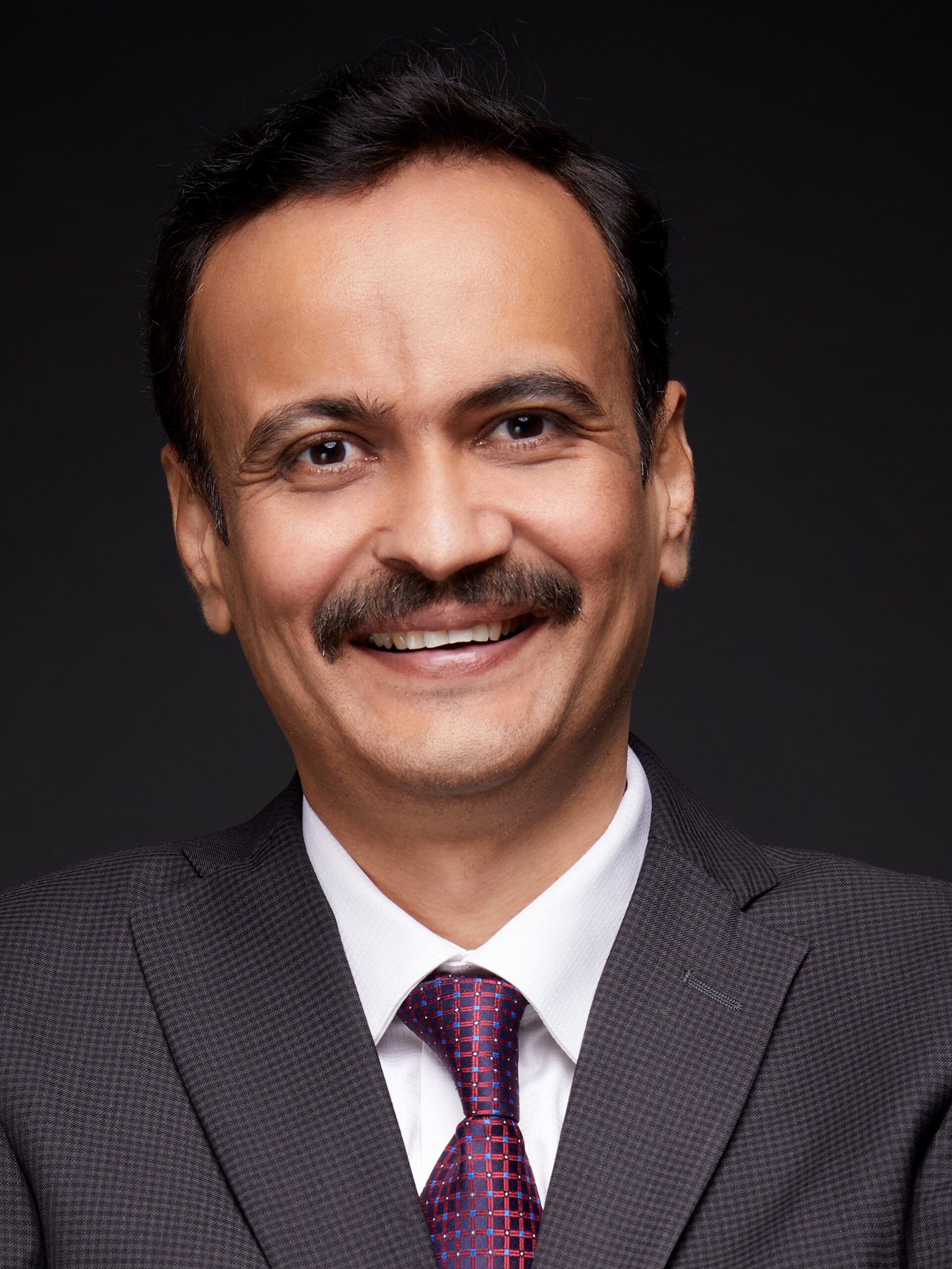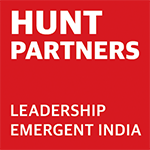Salil ChinchoreChief Human Resources Officer of Godrej Agrovet Limited
Salil brings 23 years of rich and diverse experience in Human Resources Function as well as in General Management with reputed organizations.
He has successfully led diverse HR responsibilities in areas of Organization Strategy & Design, Talent & Leadership Development, Employee Engagement, Global HR, Labor Relations & Collective Bargaining, Change Management, and Mergers & Acquisitions.
Since 2017, he is the CHRO of Godrej Agrovet Limited. He has the overall responsibility for driving the GAVL growth strategy from a HR perspective and specific focus on staffing and talent acquisition, talent retention, training & development, implementation of the company’s HR policies, systems and procedures, and employee relations.
Previously, Salil worked with Asian Paints, Cadbury (now Mondelez), TE Connectivity and Pidilite Industries. Salil is a certified Workplace Coach by ICF. In 2012, he was awarded ‘Indira Super Achiever’ Award by the Indira Group of Institutes. In 2015, he was adjudged as ‘100 Most Influential 100 HR Professional in Asia’ by Asia Pacific HRM Congress.
Salil is an economics graduate and he did his PG from Tata Institute of Social Science, Mumbai.

HR STRATEGY

1. HR drives the business, what is your take on this? How does it influence your HR strategy?
In a developing market like India, every organization aspires to annually grow 1.5 -2 times the GDP growth. Moreover, the Start-ups want to chase explosive & disruptive growth. In this context, when you ask the CEOs about their top 3 considerations, invariably; you will hear them talk about having right people in the critical roles, building right capabilities for future and create appropriate work culture for winning over the consumers and employees. This is where HR comes in. Role of HR is to help the business become future ready and win in the marketplace they compete in. Through its classical HR levers – culture, capability and talent, HR partners the business in realizing the business ambition.
In Godrej, we work on a rolling 3 year business plan (Long Range Plan). HR strategy is then derived based on the long term business ambition imperatives, SWOT of the current situation, employee demographic analysis and thorough review of the People Scorecard. Through this, for each business, we identify 3-4 broad people focus areas and then detail out the HR initiatives / interventions that will be undertaken over next 36 months. In that sense, our HR agenda is more business outcome led rather than HR process led.
Such an approach helps business leaders understand the impact HR can make on their business agenda and sponsor it.
2. Do you think HR has succeeded in becoming a strategic partner for business? What could be the areas of improvement?
The organizations have come to realize that they need to win the battle of talent and culture – to eventually win in the market place. The Boards now periodically assess the talent readiness of the organization. Succession pipeline for critical leadership roles, designing business capabilities, organization health, diversity agenda and cultural strengths now get discussed more often than earlier at the top level. So, HR now has this great opportunity to step up and deliver on this ask.
However, it is important that while focusing on the strategy, HR does not neglect its employees and servicing them. HR roles of -employee champion and service provider are as critical as and more fundamental than being a strategic business partner. So as HR, if you make strategic presentations but do not respond employee queries on time, that is not done.
TALENT MANAGEMENT

3. What is your recruitment and talent development strategy?
For us at Godrej Agrovet, recruitment and talent are most the important levers in helping businesses achieve their ambition. Every strong hire propels the business towards the target. The recruitment strategy is a combination of building long term leadership pipeline through sustained campus hiring and lateral hiring for select roles in the company. The hiring is rigorously done through cognitive & psychometric testing, certified interview assessors and using the Godrej Capability Factors as the framework for assessment.
The talent recruited is monitored for effective onboarding and accelerated peak performance. We review the effectiveness of our talent acquisition by analyzing the performance levels of new hires over 2 years as well as the early attrition (employees leaving within one year of joining). A comprehensive TA dashboard is published every quarter. The insights from this analysis are used to further strengthen the recruitment process.
Our talent development strategy is designed to meet both the organization needs as well as individual development priorities. From the organization perspective, based on the strategic talent review (we call it Total Talent Management), we identify the development plans for the high potential employees and for the successors to the critical roles. These development actions and readiness improvement is monitored closely jointly by the business leaders and HR. From an employee perspective, we encourage employees to own their development plans and improve their capability levels for current as well as future roles. The immediate manager plays the role of a facilitator in helping the employee development.
4. In a VUCA world, how do you cope with the disruptive forces? Be it Talent Retention, Engagement, and Development.
In Godrej, we hire talent through our brand and retain them through our culture. Our people philosophy is well thought through. Our people processes are designed to provide Godrejites an inspiring workplace.
Line managers are held accountable for people agenda in their teams. They carry the people matrix in their performance goals.
We regularly monitor employee engagement levels, implement actions arising out of the employee engagement feedback. And also communicate back to employees. That has helped Godrej Agrovet stay in the top quartile in the engagement scores.
In a pandemic year like this, we connected with employees even more. We held regular pulse surveys, sought employee views on dealing with the pandemic challenges. We created a dedicated webpage to recognize the ‘Corona Warriors’ for employees going beyond their call of duty. All business & functional leaders held bi-monthly town halls with all teams to communicate the business situation and decisions planned.
In the disruptive situations like these, we go back to our core Godrej Values, and ensure that we demonstrate them in letter and spirit.
(ecommerce) as well as a cash strapped economy.
TECHNOLOGY AND ANALYTICS

5. How do you see AI/Technology/Digital & Analytics play a role in HR?
It’s going to be a huge area of work for HR. Let us understand the impact it will create for organization, employees and HR.
For the organizations, AI/Technology will make people decisions more data based, analytical and help them reduce the biases in the processes. With technology and automation, organizations will scale up seamlessly and chase disruptive growth.
It will empower the employees to take charge their work and development. Their dependence on HR for routine work will reduce.
For HR, the big data generated through the people transactions can enable predictive HR work (e.g. predicting attrition, drop in performance levels etc). That sounds very exciting and altogether a new approach to HR work.
6. What are your thoughts on workplace innovation in HR, particularly in the context of the current disruption/WFH we have been forced to adopt?
They say that this pandemic year was the year of CHROs given the human crisis it created.
HR had to strike a delicate balance between the business continuity and maintaining employee health & morale.
The lockdown experience also brought in a new learning that given a choice, most of the work can be done from home (WFH). Going forward, organizations will leverage this learning and bring in similar / hybrid work arrangements that work for both them and their employees.
However, for organizations that also have factories and sales operations, they have to ensure that all such work models are fair, equitable and employees in office alone don’t get benefitted from these innovations.
Hence, rather than blindly going after the experiments of other organizations, each organization should reflect and adopt work models that suit their business models.
ROLE OF HR IN THE ORGANISATION OF FUTURE

7. Every crisis is a learning opportunity, what lessons have you picked up from Covid?
HR has come a long way. From being seen as an administrative expert & service provider, HR is now recognized as we the Strategic Business Partner.
In coming years, HR will have to embrace AI/Technology and leverage it for the business and employees. In doing so, it has to ensure that the human touch within the organization is not diluted.
As the economy recovers through the pandemic, HR will have to partner the business leaders in rebuilding the organization and capitalize on the opportunities.
India is on the cusp on implementing the most significant labour reforms in the country. HR leaders will have to understand the implications, get them implemented and carry the employees and unions along in the journey.
PERSONAL

8. What message would you like to share with young professionals?
After a challenging pandemic year, we are now staring at quick recovery and then high growth phase. There is huge opportunity for young professions in terms of learning and contribution.
Towards this, it is important that you are hungry for the learning, demonstrate ownership of your work and be with the organization through thick and thin. Organizations value individuals who don’t jump the ship when going gets tough.
9. What are the 3 most pivotal moments in your career that you learned from and/or that got you where you are today?
There are many such moments. However, if I’ve to choose, here are these:
(a) when I was asked to head a manufacturing unit (a cross functional stint for me)
(b) when Kraft Foods acquired Cadbury and I was tasked to drive certain integration changes
(c) when I partnered the organization for achieving strategic agenda.
These were challenging moments. But the learnings are immense. First, is to believe in yourself and your capabilities. Second, be ready for disruption and quickly get comfortable with it. Third, get our house in order before helping others.
